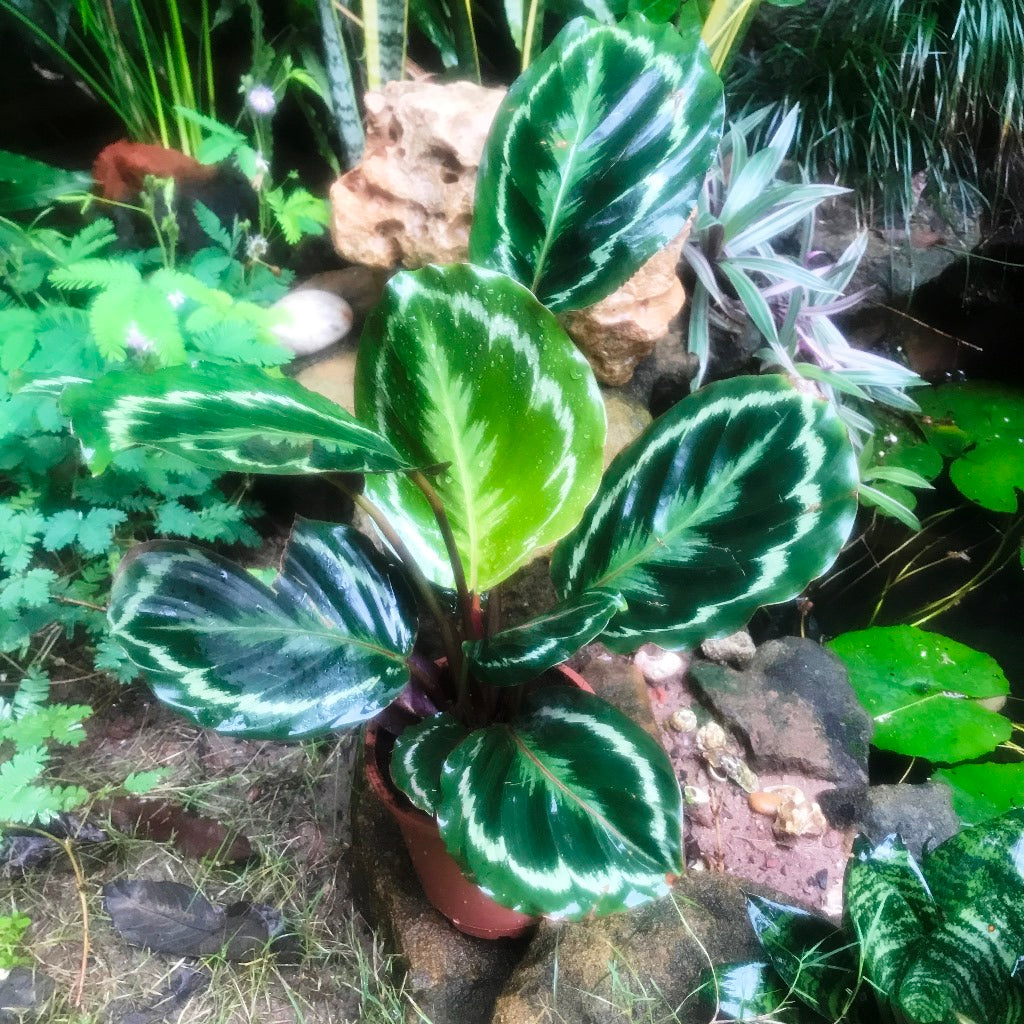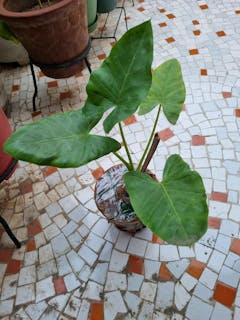Rose Painted Calathea Medallion
Family
Marantaceae
Origin
Brazil
Description
Calathea 'Medallion' leaves are heavily splashed with greens and creams with a hint of rosy red. . The dark green leaves are flushed and banded with silver and emerald green. The backs of the leaves are dark purple. It typically grows about 12 inches tall and wide.
Environment
A beautiful tropical houseplant, calathea thrives in spots with high humidity. Calathea is referred to as a shade plant, since in nature it grows in the densely vegetated tropical rainforests of South America. For this reason the plant may not be placed in the direct sun: it prefers a semi-shaded spot at a temperature of between 16 and 27 C.
Spraying the plant occasionally will be beneficial. Do not allow the pot soil to dry out completely - but take care: water standing in the pot means wet roots, which Calathea does not like. So give the plant regular but small amounts of water!
Giving fertiliser once every 14 days will ensure that you can enjoy your houseplant for a long time. Giving fertiliser once every 14 days will ensure that you can enjoy your houseplant for a long time:
The plant will continually develop new leaves. The leaves of a plant that is not happy will curl and shrivel, and will stop growing.
Landscape Use
Calatheas will do well in a container garden, terrarium or as a houseplant as it prefers low light and is easy to care for. They are very suitable for kitchens and bathrooms.





















